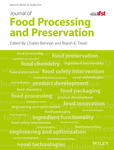Antimicrobial activities and chemical constituents of essential oil extracted from stem, leaf, and flower of Thymus fedtschenkoi from Khoy, Iran
Abstract
Thymus species, and in particular Thymus fedtschenkoi, is commonly used as a medicinal herb to treat common colds and respiratory infections as well as a food flavor and preservative in Iran. Using hydrodistillation, we herein extracted the essential oil of aerial parts (i.e., stem, leaf, and flower) of the plant (collected from Khoy) and studied their chemical composition via GC and GC-MS, along with their corresponding antibacterial properties. We showed that, while there was a substantial difference in the chemical composition of the extract from different segments of plant, they exhibited similar, yet significant antibacterial effects against gram-positive and gram-negative bacteria, as indicated by the disk method, minimum bactericidal concentration (MBC) and minimum inhibitory concentration (MIC) tests. This highlights the importance of T. fedtschenkoi plant and its essential oil in traditional medicine to treat various bacterial infections and justify its widespread application as a food flavor and preservative.
Practical applications
The significance of aromatic plants in the pharmaceutical and food industries propelled the scientific community to systematically investigate the essential oil, extracted from those plants and their biological functions. Thymus fedtschenkoi is one of those aromatic plants and has been well-known for its biological characteristics including treating common colds and respiratory infections and is also being used as an additive and flavor in some traditional foods and herbal teas in Iran. Herein, we extracted the essential oil from T. fedtschenkoi, studied its chemical composition and antibacterial functions in order to justify its application in pharmaceutical and food industries. The significant antibacterial activities of essential oil extracted from T. fedtschenkoi along with the growing use of this plant by the local people strongly suggest the need for the large-scale cultivation of this plant in rangelands area.
CONFLICT OF INTEREST
The authors have declared no conflicts of interest for this article.




